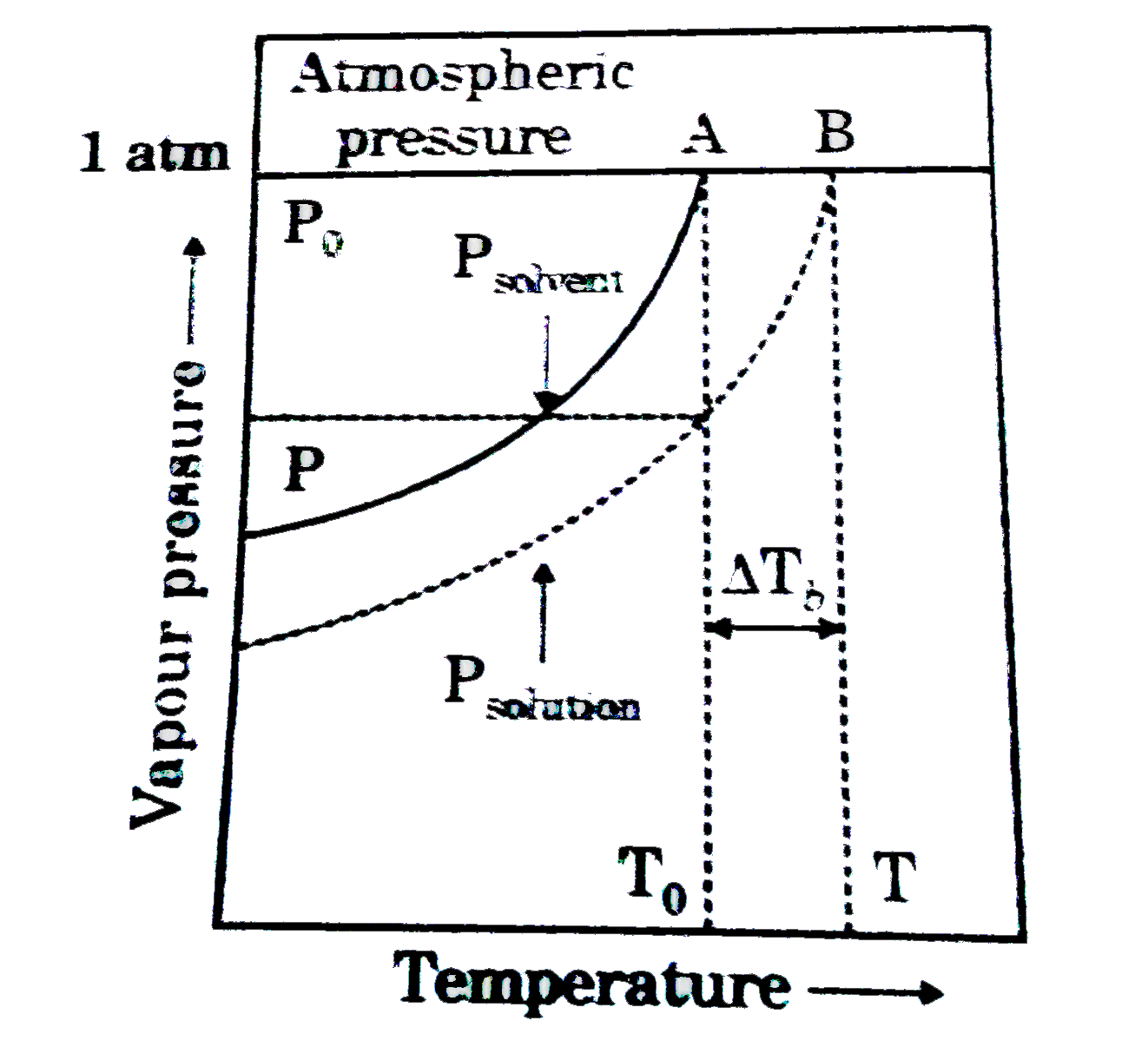Ratio of ΔTb/Kb both are non-electrolytes) is 1 molal in both cases. Hence atomic masses of A and B are respectively:
60,90
40,40
44.65,9.6
40,10
The correct Answer is:C
Similar Questions
Ratio of ΔTb/Kbof6%AB2and9%A2B(AB2andA2B both are non-electrolytes ) is 1 mol/kg in both cases. Hence atomic masses of A and B are respetively.
View SolutionRatio of △TbKb of 10 g AB2 and 14 g A2B per 100 g of solvent in their respective, solution (AB2andA2Bboth are non-electrolytes ) is 1 mole/ kg in both cases. Hence, atomic wt. of A and B are respectively :
View Solution
Knowledge Check
Ratio of ΔTb/Kb for 6%AB2and9%A2B(AB2andA2B both are non-electrolytes ) is 1 mol/kg in both cases. Hence , atomic masses of A and B are respectively :
A60, 90B40 , 40C40 , 10D10 , 40Figure explains elevation in boiling point when a non-volatile solute is added to a solvent. Variation of vapour pressure with temperaure and elevation in boiling point is marked.

Ratio of ΔTb/Kb of 6%AB2 and 9%A2B(AB2 and A2B both are non-electrolytes) is 1 mol/kg in both cases. Hence, atomic masses of A and B are respectively.A60,90B40,40C40,10D10,40Ratio of ΔTb/Kbof6%AB2and9%A2BAB2andA2B both are non-electrolytes is 1 mol/kg in both cases. Hence atomic masses of A and B are respetively.
A60,90B40,40C40,10D10,40
Ratio of ΔTbKb of 10 g AB2 and 14g A2B per 100 g of solvent in their respective, solution (AB2 and A2B both are non-electrolytes) is 1 mol/kg in both cases. Hence, atomic wt. of A and B are respectively.
View SolutionHow are ΔTb and ΔTf related to the molar mass of the solute?
View SolutionHow are ΔTb and DelatTf related to the molar mass of the solute ?
View Solution1g of a non-volatile non-electrolyte solute is dissolved in 100g of two different solvents A and B whose ebullioscopic constants are in the ratio of 1 : 5. The ratio of the elevation in their boiling points, ΔTb(A)ΔTb(B) is
View Solution1g of a non-volatile non-electrolyte solute is dissolved in 100g of two different solvents A and B whose ebullioscopic constants are in the ratio of 1 : 5. The ratio of the elevation in their boiling points, ΔTb(A)ΔTb(B) is
View Solution
